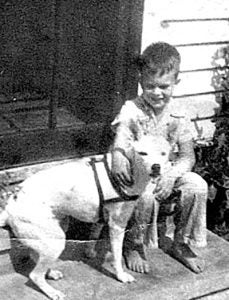And now you know: The chase and demise of Floto
Published 11:20 am Saturday, November 9, 2019
(Editor’s Note: This is the first part of a two-part series.)
Anyone living in Orange and old enough to observe the events of November 21, 1921, and the following days, never forgot them.
The Sells-Floto Circus was in town and on November 21 one of the elephants named Floto escaped.
There are two definite facts about those few days. The first is that Floto escaped and went on a rampage through Orange. The second is that Floto was killed by being shot.
Everything else is subject to the memories of possibly a few hundred people, who saw what they say they saw, and/or were told how things happened and who did them.
Floto was an elephant of an unknown age that had been with the circus 16 years. He was the namesake of Otto Floto, a circus enthusiast who was part owner of the circus. Otto Floto was a sportswriter for the Denver Post by profession.
Floto escaped, no denying that, but how and why did he escape?
How?
Well depending on which story you want to believe, he broke free from restraints or escaped from a corral.
Why did he escape?
Several stories here: One is that a young elephant got into Floto’s feed bucket and angered him, another is that he was in “must”, the time of year when boy elephants go looking for girl elephants. The most implausible reason is that a boy fed him a large plug of tobacco. The truth is probably in there somewhere.
After Floto fled, the town went crazy, an elephant was running from the circus grounds, in the area around 8th and Division Streets.
There is no record of how long Floto was loose before the first shots were fired. After the first shot, more shots followed.
Floto charged down Main Street, went across the Brunner Bridge and into West Orange.
Eventually, he was cornered in a grove of trees in the vicinity south of West Orange. Citizens with cars surrounded the trees and kept lights on Floto overnight.
The next morning the fatal shot was fired.
The question is: Who fired the shot?
Credit is given by some sources to Sheriff J.W. Helton.
In this version, Helton had been loaned a high-powered rifle by E.W. Brown. One story about Brown is that he bought the rifle to go on an African safari. Brown probably had a “high-powered” rifle, but there is no account of him ever going to Africa.
Historian Harry Kingston, who lived in Beaumont was a contributor to “Buckle’s Blog”, a blog about circus life and history. Kingston wrote that the man who shot Floto retired and moved to Jasper.
The man’s name was Dewey Godfrey. Godfrey was a relative of Kingston’s mother-in-law, Mary Alice Dabney. Her story was Godfrey had been an employee at Orange Supply when Floto rampaged. Godfrey said people were shooting Floto with .22 caliber rifles and shotguns and only making him mad.
On the morning after the escape, Godfrey who had a 30-30 rifle went with Sheriff Helton to the place where Floto was cornered. Godfrey knew where to place the killing shot and shot Floto behind the left ear. The shot was fatal, Floto dropped dead.
When Godfrey knew Kingston was a circus historian, he gave Kingston a small piece of tusk ivory for his collection, along with a letter signed by him that verified the ivory was from Floto.
In later years, Godfrey was employed by Remington Arms and said some of the ivory from Floto was used to make gun handles.
A report by Frank Braden in Illustrated World Magazine said: “The whole city took up arms in a jiffy. A local hardware store threw open its doors and issued arms and ammunition to anyone who wanted them.”
It was reported that Floto had been shot over 60 times.
“And now you know.”
Part two will be about what happened to Floto’s carcass.







